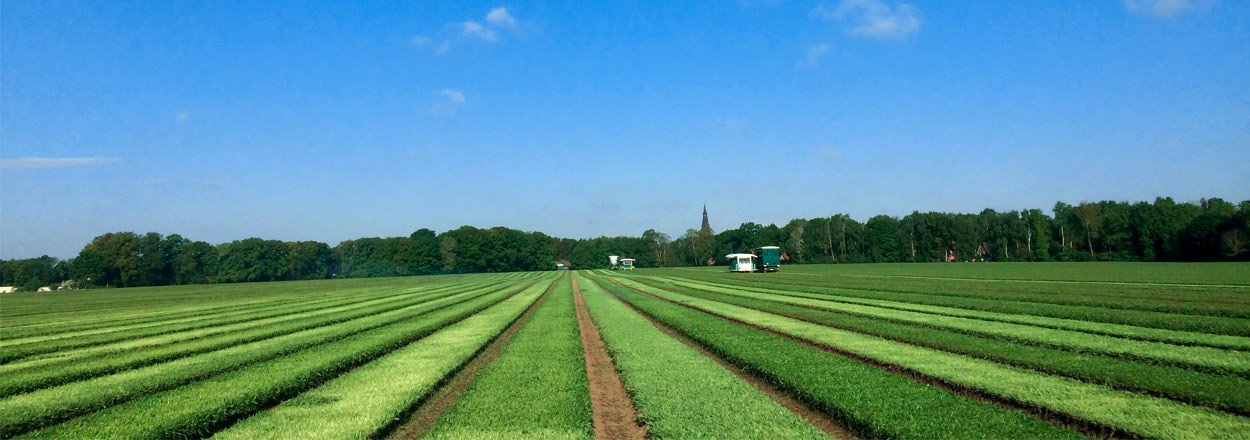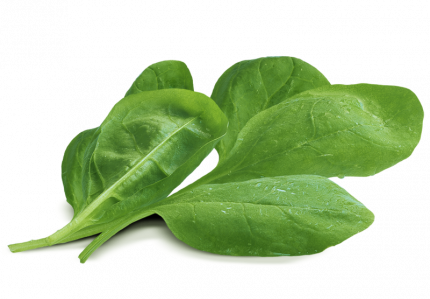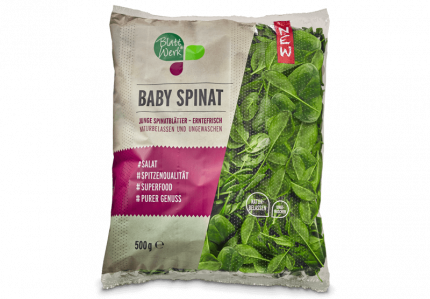Growing
Baby spinach can be sown throughout the summer, as long as the right varieties are chosen. If spring spinach is sown in summer, it will start to flower before it has formed enough leaves to harvest – a summer spinach variety should be chosen. The sowing depth should be 1-3 cm, the spacing between the plants 2-4 cm. The spinach takes around 35 days between sowing and harvest in high summer, and up to 50 days in spring and autumn. Only the leaves above ground are harvested. If the leaves are not cut off too low, they can grow back and be harvested a second time.
Nutrients
Baby spinach contains a lot of vitamin A (retinol) in the form of the vegetable precursor β-carotene. When it comes to phytochemicals, baby spinach provides saponines, polyphenols, carotenoids and phytosterines. It also contains large amounts of vitamin C (ascorbic acid) and iron. Three vitamins in the B complex are also present in large quantities: vitamin B1 (thiamine), vitamin B2 (riboflavin) and vitamin B6 (pyridoxine). Baby spinach contains a relatively high level of vitamin E (tocopherol), folic acid and vitamin K. When it comes to minerals, as well as iron, potassium, calcium and magnesium are also present at high levels.
Preparation
Baby spinach retains its taste best when it is only briefly cooked or eaten raw. Spinach goes well with mashed potato or scrambled egg; it is also commonly used with mozzarella in Mediterranean dishes.
Storage/preservation
Fresh baby spinach should be stored for no more than two days raw and one day once prepared or cooked. For longer storage, blanching, rinsing in cold water and then freezing is recommended. It can then be stored for up to 10 months.


